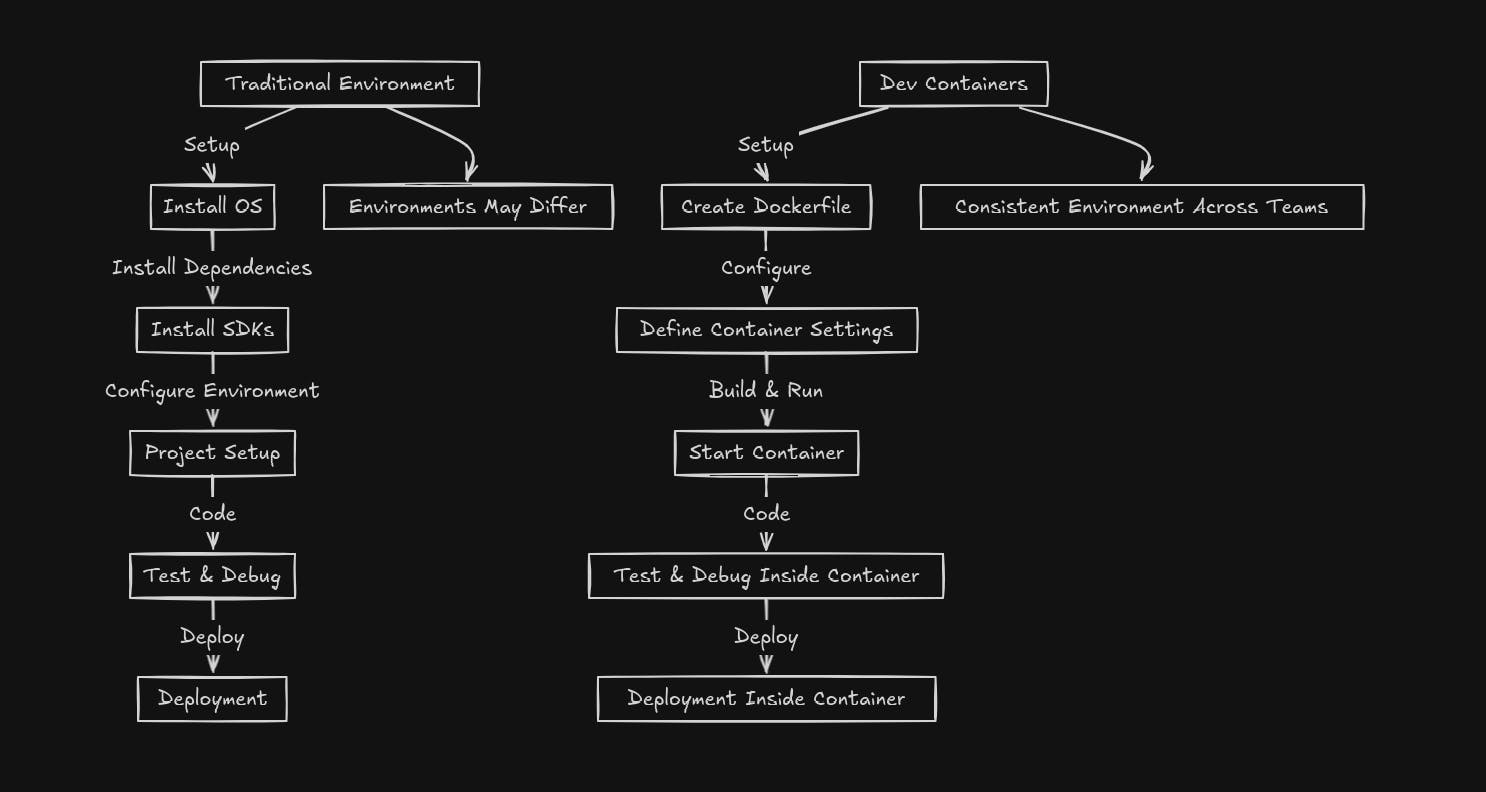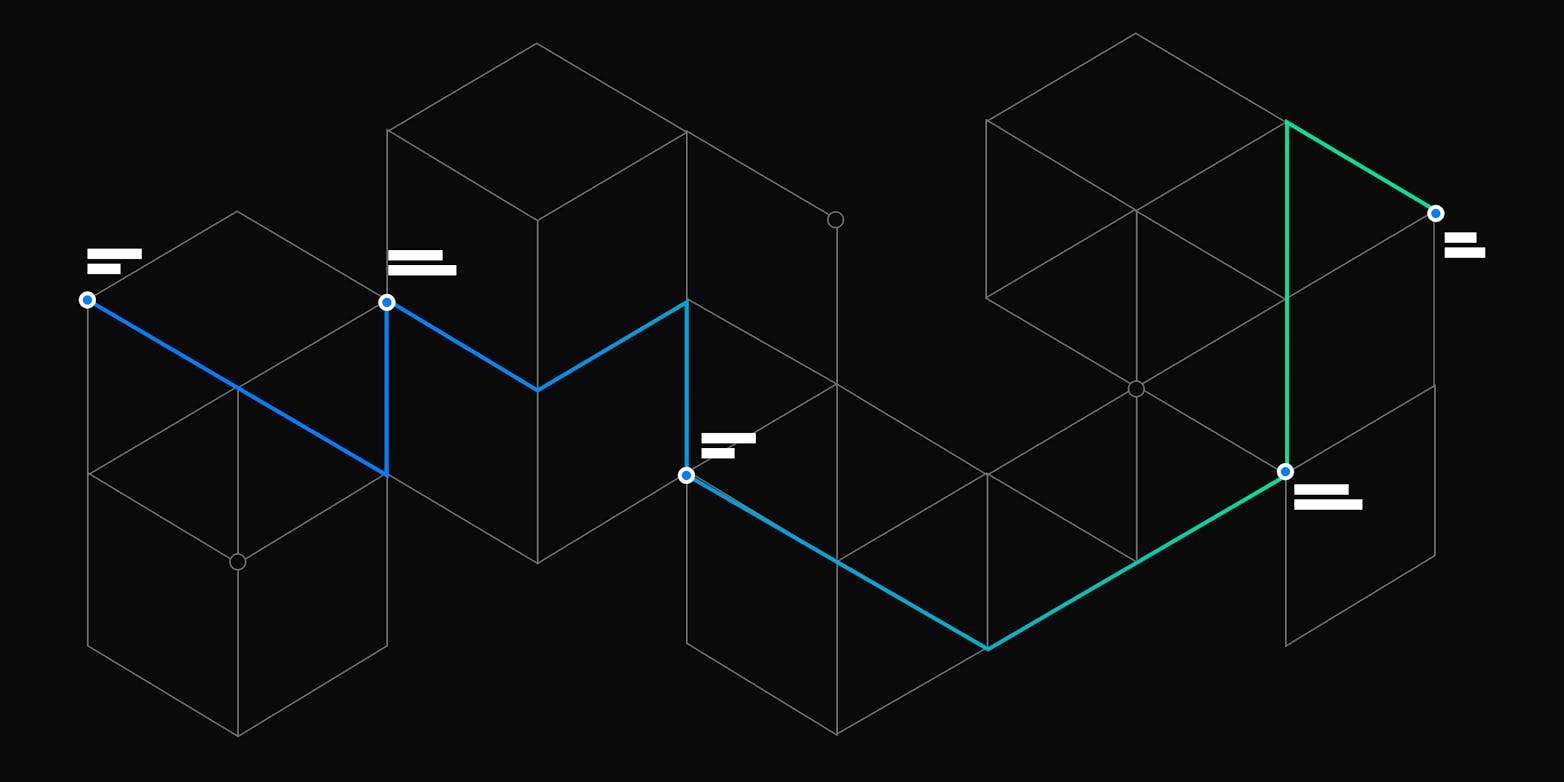These days, picking the right development environment is more important than ever. With containerization becoming a big trend, a lot of developers are thinking about moving from traditional setups to Dev Containers.
In this article, we’ll explore what Dev Containers are all about, compare them to the old-school development environments, and break down their pros and cons.
TL;DR
Consistency: Dev Containers ensure consistent environments across teams, avoiding the "works on my machine" problem.
Ease of Onboarding: Pre-configured containers simplify onboarding, making it easy for developers to start contributing.
Complexity and Performance: Containers introduce extra complexity and may have performance overhead, but tools like Daytona can mitigate these issues.
What Are Dev Containers?
Dev Containers are development environments packaged within containers, offering a consistent and isolated setup across various platforms. Powered by tools like Docker and orchestrated through integrated development environments (IDEs) like Visual Studio Code (VSCode), these containers encapsulate all dependencies, tools, and configurations needed for a project.
Traditional Development Environments
Traditional development environments involve setting up the necessary tools, libraries, and dependencies directly on a developer’s machine. This approach has been the norm for decades, where developers install and configure everything from the operating system to the programming language and third-party libraries manually.

Right side: Dev Containers as isolated boxes.
Left side: A cluttered traditional environment with overlapping dependencies.
Pros of Dev Containers
1. Environment Consistency
One of the most significant advantages of using Dev Containers is their consistency across different machines. Since the environment is defined within a container, every developer working on the project operates in the same environment, regardless of their host system. This eliminates the classic "works on my machine" problem, ensuring that the code behaves the same way in development, testing, and production. For more on environment consistency refer to this article on standardized development environment.
2. Streamlined Onboarding
Setting up a traditional development environment can be a time-consuming process, especially for complex projects with many dependencies. Dev Containers simplify onboarding by providing a pre-configured environment. New developers can get started quickly by pulling the container image and launching it with a few commands. This efficiency reduces the time spent on setup and allows developers to focus on writing code. Refer to this article to learn more about the key components and benefits of onboarding
3. Host System Cleanliness
By isolating the development environment within a container, Dev Containers keep the host system clean. There’s no need to install a myriad of libraries, tools, or dependencies directly on the host machine, reducing the risk of conflicts and clutter. This approach also makes it easier to work on multiple projects with different requirements without worrying about cross-contamination of dependencies.
Cons of Dev Containers
1. Added Complexity
Dev Containers are great, but they come with their own set of challenges. You’ll need to get a handle on containerization, Docker commands, and possibly managing multiple containers. For those new to these technologies, it can be a bit overwhelming. Plus, keeping container images up to date takes more work than traditional setups.
2. Potential Performance Issues
Containers run in a virtualized environment, which can introduce performance overhead compared to running applications directly on the host machine. Although the overhead is generally minimal, it can become noticeable in resource-intensive applications. Developers working on high-performance tasks may experience slower build times or reduced application performance within a container.
Pros of Traditional Development Environments
1. Direct Access to Hardware
Traditional setups allow developers to interact directly with the hardware, without the abstraction layer that containers introduce. This direct access can lead to better performance, particularly in applications that require intensive processing or real-time capabilities.
2. Simplicity and Familiarity
For many developers, traditional development environments are familiar and straightforward. There’s no need to learn new tools or concepts, making it easier for teams to maintain and troubleshoot the setup. This simplicity can be particularly advantageous for small projects or teams that don’t require the advanced capabilities of containers.
Cons of Traditional Development Environments
1. Environment Drift
Over time, traditional development environments are prone to "environment drift," where different developers’ setups begin to diverge. This can lead to inconsistencies in how code behaves across different machines, making debugging and collaboration more challenging. Managing dependencies and ensuring consistency becomes a manual and error-prone task.
2. Onboarding Challenges
Setting up a traditional development environment can be time-consuming, especially for complex projects. New developers often spend significant time configuring their environment before they can start contributing. This delay can be a bottleneck in fast-paced development cycles.
3. Potential for Host System Pollution
Installing numerous dependencies directly on the host system can lead to clutter and conflicts, especially when working on multiple projects. Over time, this can make the system difficult to maintain and may require frequent cleanups or even a full system reinstall to resolve issues.
For developers considering the shift to containerized environments, Daytona serves as a powerful tool to facilitate this transition. Daytona integrates seamlessly with VSCode to manage containerized development environments, making it particularly useful for complex projects requiring GPU acceleration or other specialized setups. By automating the creation and management of Dev Containers, Daytona reduces the complexity typically associated with containerization, allowing developers to focus on coding rather than configuration.
Daytona exemplifies the benefits of Dev Containers by providing a consistent, clean, and efficient development environment that can be easily shared across teams. For developers experimenting with advanced tasks like LLM inference or other resource-intensive applications, Daytona ensures optimal performance while maintaining the cleanliness and consistency that containers promise.
Quick Comparison Table
| Feature | Dev Containers | Traditional Dev Environments |
|---|---|---|
| Environment Consistency | High - Same environment across all machines | Low - Environment drift over time |
| Onboarding Time | Quick - Pre-configured setup | Slow - Manual setup required |
| Host System Cleanliness | Clean - Isolated within containers | Potentially cluttered with dependencies |
| Complexity | High - Requires knowledge of Docker, containers | Low - Familiar and simple |
| Performance | Possible overhead due to virtualization | Direct access to hardware, faster |
| Flexibility with Multiple Projects | Easy to manage isolated environments | Can lead to conflicts between dependencies |
| Tooling & Maintenance | Additional effort to maintain container images | Easier to manage without containers |
Conclusion
For developers contemplating a switch to containerized environments, the choice between Dev Containers and traditional setups boils down to the specific needs of your projects and team dynamics. Dev Containers offer unparalleled consistency, streamlined onboarding, and system cleanliness, making them ideal for large, distributed teams or projects with complex dependencies. However, they do introduce additional complexity and may incur performance overhead.
On the other hand, traditional development environments, while simpler and more familiar, are prone to issues like environment drift and system pollution, particularly in larger or more complex projects.
If your work involves sophisticated setups, especially those that can benefit from GPU acceleration or need to maintain consistency across a team, Dev Containers—especially when managed by tools like Daytona—are likely the better choice. For smaller, simpler projects or for those who prioritize direct hardware access, a traditional development environment may still be the way to go.
As you weigh the pros and cons, consider your project's requirements and your team's familiarity with containerization. With tools like Daytona, making the switch to Dev Containers can be a smooth and rewarding experience, offering long-term benefits that far outweigh the initial learning curve.







